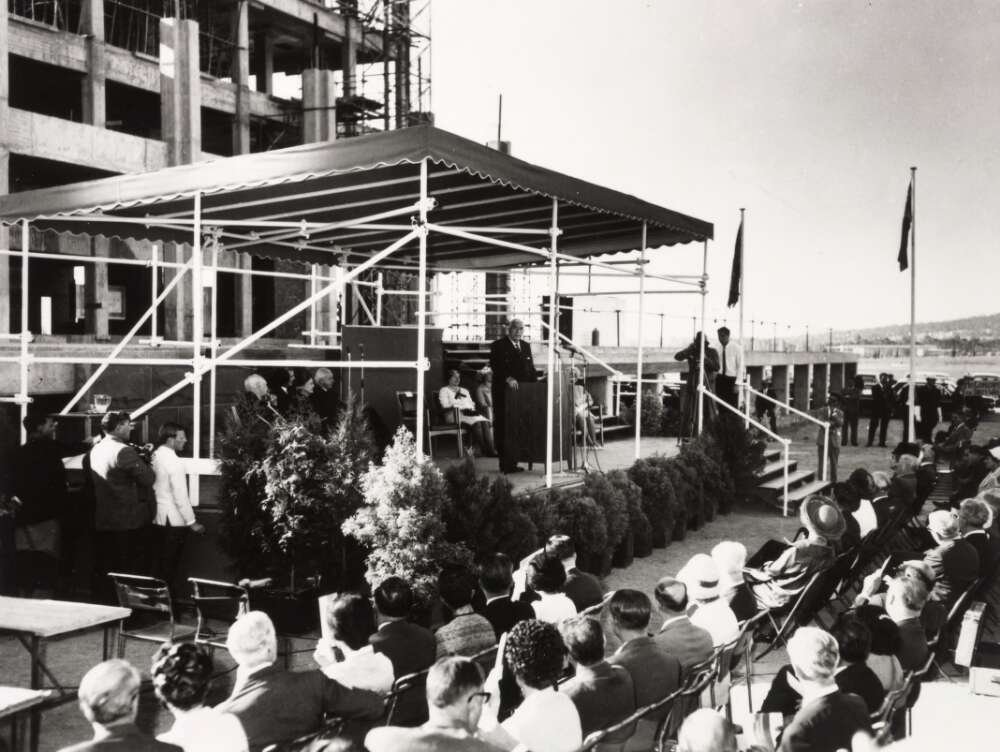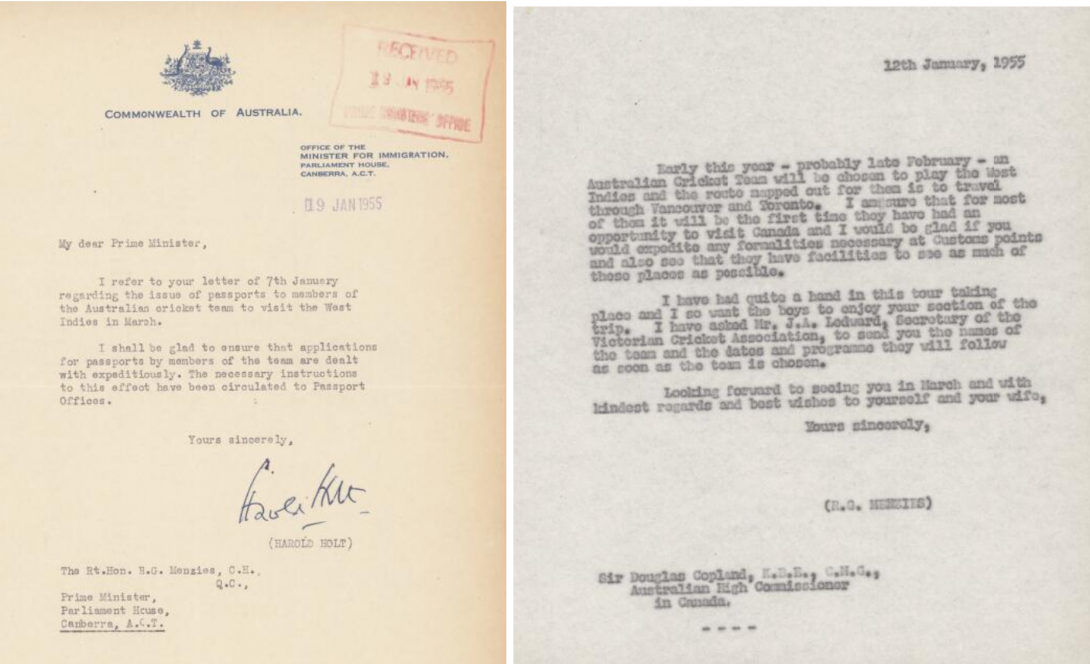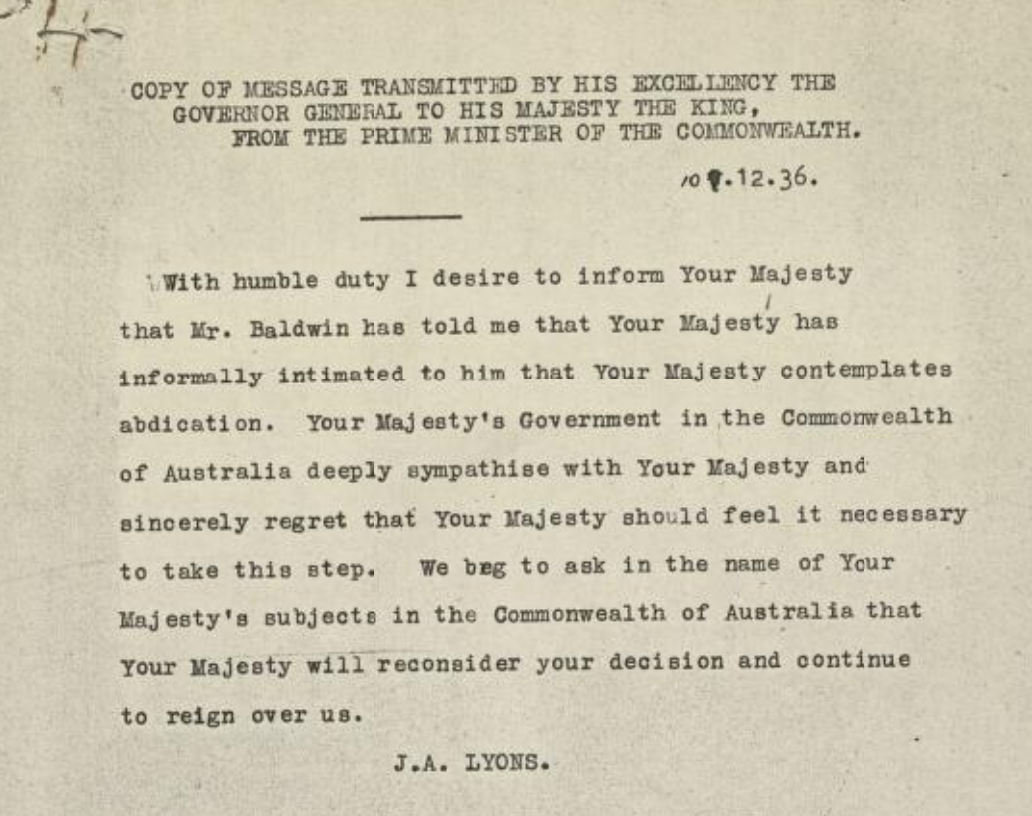
The digitisation of the papers of Sir Robert Menzies (1894 –1978) has recently been completed through the Treasured Voices Program with support from the Federal Government. Items from this extensive collection are now available to explore on Trove.
“It is our duty in this generation to attend to the books produced, that the future will learn something about us. We learning from the past, we learning from each other, we helping to instruct and inform the future… It’s only when we realise that we are part of a great procession, that we’re not just here today and gone tomorrow, that we draw strength from the past and we may transmit some strength to the future”
- Sir Robert Menzies during the laying of the National Library of Australia’s foundation stone, 31 March 1966
Whether in print, on television or online, when the name Sir Robert Menzies is mentioned, it is invariably preceded or followed by ‘Australia’s longest serving prime minister’. Menzies has become so synonymous with this period of Australian history that the decade and a half between 1949 to 1966 has become known as ‘the Menzies era’. It is this (politically) vast stretch of time that makes the Sir Robert Menzies collection such an important one for understanding this transformational time in our history.
Now digitised and widely accessible for the first time, the collection spans a period of over 70 years. More than 600 boxes of material uniquely capture a tumultuous period in the history of Australia as it continued to define itself as a country and as a people throughout the twentieth century, including during the Second World War. The digitisation of this collection offers a glimpse of the communications between the Allied world leaders including Sir Winston Churchill, but also of what drove and inspired one of our most enduring and revered Prime Ministers on a personal and private level.
From war-time leader to the cricket pitch
Menzies was elected leader of the United Australia Party and prime minister after the death of Joseph Lyons in April 1939. Five months later, in September 1939, he led Australia into the Second World War. Returning to Australia in 1941 after four months participating in Churchill’s war cabinet in England, Menzies resigned as prime minister after losing the support of the United Australia Party. Fascinatingly, the collection holds a series of cables from Dame Pattie Menzies to Sir Robert in London from March 1941. The first: a note to tell him the following cable is confidential, and he should decipher it himself. The next: a coded message from Dame Pattie and her father John Leckie (a minister in Menzies’ government) warning that, no doubt due to the rumours over his leadership at home, he should immediately announce an early return. We then have Menzies’ deciphered version of the message on Australia House stationary. Unfortunately for Menzies, his reply explains he must stay on in Britain for another month, and it contributed to his loss of the leadership. Helping form the Liberal Party in 1944, he was elected its inaugural leader in 1945, and took it to victory in the 1949 federal election.
In his time as prime minister, Menzies led us through three wars, won eight elections, survived three opposition leaders and, as Mungo MacCallum noted, four Australian cricket captains. From his impassioned correspondence on the latter two, it’s difficult to discern which he pursued more fervently.

Menzies' early years and political legacy
From early in his life, Menzies was an over achiever. Aged 13, he ranked first in the state-wide Victorian scholarship examinations, which fully funded his secondary education. In 1913 Menzies entered the Melbourne Law School, winning a variety of prizes and scholarships during his time as a student and graduating from the University of Melbourne in 1916 with first-class honours. One of his prize-winning essays, The Rule of Law During the War, was published with an introduction by the dean of the law school, Harrison Moore. The collection includes several handwritten drafts by Menzies.
Admitted to the Victorian Bar and to the High Court of Australia in 1918, Menzies established his own practice in Melbourne, specialising in constitutional law. In 1920, he won a landmark case in the High Court for the Amalgamated Society of Engineers, and in 1929 was appointed the youngest King's Counsel in Australia.
With the Nationalist Party of Australia, Menzies won a seat in the Victorian Legislative Council in 1928 and moved to the Legislative Assembly in 1929. As Deputy Premier of Victoria in 1932-1934, Menzies also served as Attorney-General and Minister for the Railways, until taking the federal seat of Kooyong which he held for the following thirty-two years.
The collection also includes treasures you wouldn’t expect, for which we have Menzies’ enthusiasm as an autograph hunter and collector of ephemera, and the expert services of his private secretary of 25 years Lorna Hazel Craig to thank for their survival and impeccable condition. These include the correspondence of Menzies’ predecessor Joseph Lyons and British Prime minister Stanley Baldwin concerning the abdication of His Majesty King Edward VIII in 1936.

Menzies and the National Library
Menzies’ leadership also played a vital role in the approval, timing, design and construction of the National Library. In 1956, Menzies established the Commonwealth Inquiry into the National Library, which in 1957 recommended the formal separation of the national and parliamentary libraries and the creation of a separate archival authority. On 10 November 1960, Menzies introduced the National Library Bill into the House of Representatives, which formalised these recommendations.
Having resigned his position as Prime Minister in favour of Harold Holt two months earlier, it was Menzies’ driving force behind the realisation of the Library that saw him, rather than his prime ministerial successor lay the foundation stone of the National Library in 1966. Following an approach in 1971 to house his papers at the Library, Menzies donated the first instalment in 1975 and a further instalment was transferred from his Melbourne office in 1976. His remaining papers were bequeathed to the Library and received in 1978. Further papers were presented by Menzies’ daughter Heather Henderson in 1998 and 2000, as well as the papers of Dame Pattie Menzies in 1995.
With the digitisation of these meticulously collected papers now complete, Menzies’ belief that through the Library’s collections “the future will learn something about us… that we draw strength from the past and we may transmit some strength to the future” has, and continues to be realised.